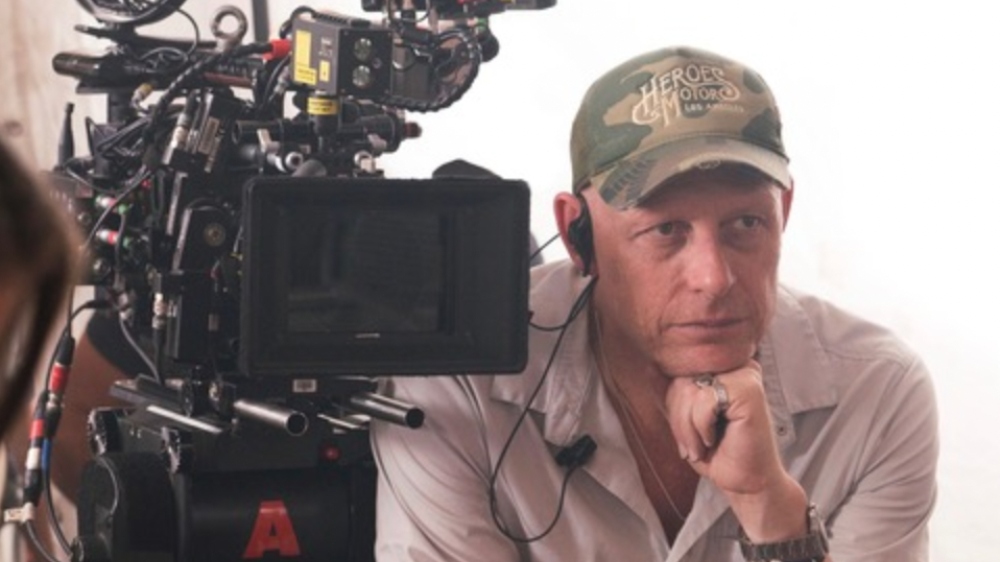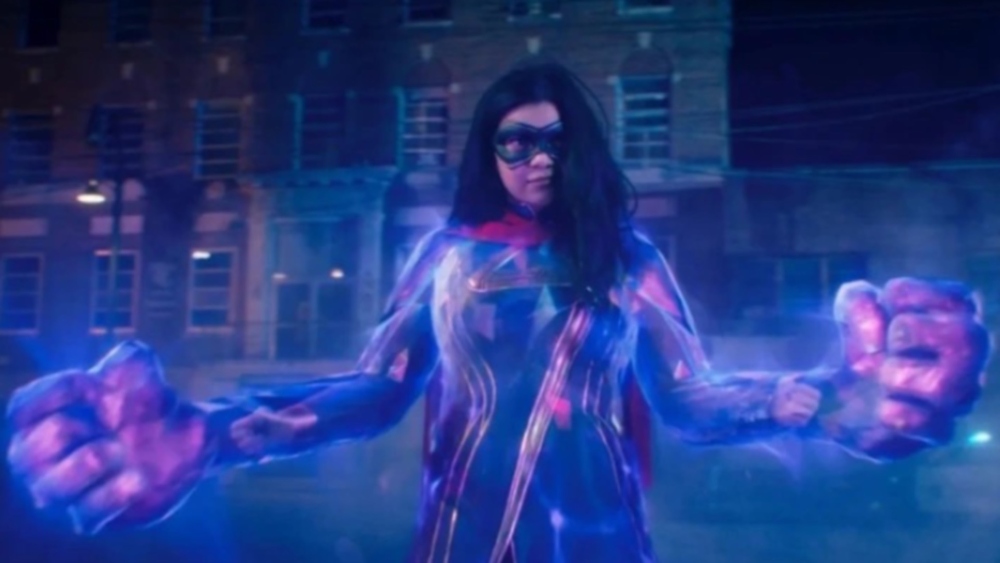
Few cinematographers are lucky enough to work on one hit series, let alone two. Jules O’Loughlin, ASC pulled that off despite several disruptions, including COVID.
In the Disney+ superhero series Ms. Marvel, Jersey City native Kamala Khan (Iman Vellani) discovers an ancient bangle that not only gives her superpowers but opens a portal to aliens with evil designs on Earth. O’Loughlin shot Episodes 4 and 5 in Thailand.
Meanwhile, FX’s tense spy drama The Old Man is a world away from the bright, Southeast Asian colors of Ms. Marvel. Jeff Bridges stars as Dan Chase, a long-retired CIA assassin marked for death by an enemy from his past. Based on a novel by Thomas Perry, The Old Man features an outstanding ensemble cast including John Lithgow, Amy Brenneman, and Alia Shawkat. O’Loughlin shot Episodes 3 and 4, which feature flashbacks to the Afghan village where a younger Dan Chase (Bill Heck) first gets into trouble.
O’Loughlin has worked on everything from action comedies (The Hitman’s Bodyguard) to family-oriented fantasy films (Come Away). He spoke with Below the Line from Vancouver, where he is working on his latest high-profile streaming series.

Below the Line: Let’s start with Ms. Marvel. When did you shoot that one?
Jules O’Loughlin: We started in Bangkok in January 2021, and worked until May. Episode 3 takes place in modern-day Karachi, and in Episode 4, we flashback to the Partition, from 1942 to 1947.
Robrecht Heyvaert, who shot Episodes 1 and 6, set up the show. We could depart somewhat in our episodes because we’re going to different locations, but it was important for me to fit into the Ms. Marvel world. I had a lot of discussions with Rob, watched the dailies. I knew technically what the overall look of the show was, the ideas for camera movement, visual effects, etc.
[Director] Sharmeen Obaid-Chinoy and I shot-listed the entire two episodes, [then] went back through [it with] our creative producers. The big action pieces were storyboarded. I worked very closely with our VFX Supervisor Nordin Rahhali, so we had a good idea of what the effects would look like.
The big thing about Kamala’s powers is that we had to provide interactive light for them. We had to figure that out before we hit the floor. We had a lot of camera movement, and I couldn’t flood out the frame with lighting fixtures and rely on post to paint them out later.
BTL: But you’re working with Disney money.
O’Loughlin: [laughing] At the end of the day, we still have to be filmmakers. I try to do it in camera as much as possible. I don’t want to hand it off to another department. I believe in in-camera effects, I believe they affect the audience [on] a subconscious level.

BTL: Karachi looks considerably different from the Jersey City scenes in the other episodes.
O’Loughlin: Sharmeen is Pakistani-born and bred. She’s very highly respected around the world for her documentary work. Two Oscars, seven Emmys. She was enormously concerned about three things here. [The] first was to do justice to the Marvel comic book. Show business is this synergy of art and commerce. It’s got its artistic side, but we’ve got to make a cool, successful show that people will want to watch.
Second, Sharmeen wanted to do justice to Karachi. That was a little bit of a dance for me, coming from the smoke and mirrors of narrative filmmaking. Convincing her we could make Karachi out of Bangkok. Not just the look, but the tone and the feel.
Third, was the historical angle. For Indians and Pakistanis, everyone has a Partition story. Everyone has family members who were in some way, shape, or form affected by the Partition.
We spent a lot of time shot-listing and storyboarding that. Sharmeen wanted to infuse those sequences with little vignettes that showed what was happening to individuals.
BTL: The overhead shots in the railway station look enormous.
O’Loughlin: We did some drone work there. We had a 50-foot Technocrane, but there was a bit of smoke and mirrors in that sequence as well. Because of COVID, we were restricted to 200 extras at a time. How do we make them look like 200,000 extras? We did some digital doubling. For the wide shots, we would have to populate an area with extras, then move them and repopulate another area. Later in post, we tiled them in.
BTL: What I like about your work is that it’s this enormous sequence, but your camera remains close to the characters.
O’Loughlin: That’s one thing as a cinematographer I like to do — I want to put the audience into the shoes of the characters. The 50mm lens is usually the standard, but I always tell my AC to put a big red cross on it. I don’t want a 50mm lens, I love to be close and wide, or backed off and long. Nothing mid, you know what I mean? We want to be right there with the characters.

BTL: What were you shooting with?
O’Loughlin: The Alexa LF. We had rehoused Panavision G series anamorphic lenses with the coating stripped off them.
I’ve used the G’s a few times, actually, on two previous films. Beautiful Panavision glass, classic anamorphic flaring, and lovely drop-off. Once we rehoused them and had them stripped, we would get that blue flare with multiple colors in it — purples and blues and almost a green. Strangely enough, it fed into our color palette, because Kamal’s powers are kind of purple and blue.
I love anamorphics because I embrace the imperfections in them. I like it when lenses don’t match or when a certain lens is a harsh mistress. You’ve got to be very careful with that lens because if you step out of line, it’s going to fall apart. That’s what I love about old glass. And for this story, where Kamala is a slightly unhinged 17-year-old and anything can happen, the glass really suited her story.
It’s interesting because The Old Man is the complete opposite. It’s anamorphic, but it’s ARRI Master Anamorphic and that’s about as precision German as you can get. The lenses go right out to the edges with very little flaring.

BTL: What exactly did you shoot for The Old Man? The episodes break up the timelines a lot.
O’Loughlin: I shot most of [Episodes] 3 and 4. Sean Porter shot the office scenes in [Episode] 3 where John Lithgow is in his spy office. There were some parts of Episode 1 that I shot for him. It’s all disjointed because we were hit with the COVID pandemic. We shot for a few months in LA, then we shut down on March 15, which is right when we were supposed to fly to Morocco for the second part of the shoot.
Instead, I came back in January of last year. The previous October the showrunners decided not to go to Morocco, so they built the Hindu Kush village at the Blue Sky Movie Ranch in Santa Clarita. I was really worried about shooting in California, but Julie Berghoff, the Production Designer, and the VFX team did a magnificent job creating the village.
BTL: Again, what is really effective about your work here is how close you are to the characters, and how you reveal information through subtle camera movements.
O’Loughlin: Just cutting to a wide shot at the beginning of a scene to me is a little bit boring. I always [want to] make the audience work a little bit. Make them ask, “What’s going on outside the frame? Where are we going with this?” Sometimes you do need to deliver all the information up front, but often, it’s “let’s get the audience invested in this. Let’s make them work.”

BTL: You do that in a fantastic shot with Amy Brenneman. She’s in her car, ready to leave, when the sound of barking dogs draws her to her kitchen window. That’s when you see a bullet hole in the glass.
O’Loughlin: We designed that with the director, Greg Yaitanes, and the stunt coordinators. It looks like a oner but once again, smoke and mirrors: it’s three shots. We did a Steadicam into a dolly move and then into handheld. It was a lot of fun coming up with that design. For example, we didn’t have a windscreen in the front of Amy’s car. We were hiding camera moves, hiding the lighting and the overhead scrim. There were reflection issues with those kitchen windows as well. Doing a oner for a oner’s sake is kind of cool, but for me, the shot has to drive the story.
BTL: Were you using two cameras?
O’Loughlin: Yes, a lot of the time. For the last six or seven years, actually, since I did Black Sails in 2014, I’ve been using two cameras. Sometimes three, sometimes five for action.
BTL: How did you collaborate with Greg Yaitanes? Was the process similar to the one on Ms. Marvel?
O’Loughlin: It was a different kind of process. With Greg, it’s a lot of working it out on the day.

BTL: There’s an extended shot in a home in the Afghan village where the young Dan Chase and the young Faraz Hamzad have a crucial conversation. It’s staged so they walk through the house and out onto the porch. Was it scripted that way?
O’Loughlin: From memory, no. John Steinberg and Dan Shotz, the showrunners, they’re always open to blocking which has movement in it, that shows off the location. Any chance we can get some more energy into a shot, they’re open to. So Greg and I pitched that shot to them, at least that’s how I remember it.
It’s something Greg and I would’ve worked out on the day with the actors. Greg’s not the kind of director who wants to shot list. He wants to work with the actors on the day, see what they do, throw some ideas at them. In that case, we would say, ‘Listen, guys, we want you to move through the house. Start here, end up there. See what you do.’
Something I learned from a director on Black Sails is [that] when it comes to blocking, don’t nail the actors’ feet to the floor. Give them free rein up front, unless there’s something very technical that you need. Let’s just see what they do. Then we work out the shots from there. It’s certainly more of an organic process.

BTL: It reflects the script as well because these characters are feeling each other out, they’re uneasy with each other.
O’Loughlin: Right. There are moments in The Old Man that had to be carefully planned, like Amy’s oner. Sequences like that are peppered throughout the show. And then there are other ones where it’s more, let’s see what they do.
The thing about The Old Man [is], it needs to feel real. The audience needs to feel as though this could actually happen. We didn’t want to embellish it like a Marvel show. I guess I would call it cinematic realism.
BTL: What are you working on now?
O’Loughlin: Percy Jackson and the Olympians, a series for 20th Century and Disney. I’m working with John Steinberg and Dan Shotz again, which is great.
BTL: And with Disney money again.
O’Loughlin: [laughing] Unlimited funds. There’s so much money, it’s not funny. [laughing again] Actually, we’re doing a lot of work on an LED volume stage. I’m new to that, and it’s a steep learning curve, but very interesting. Maybe on the next season of The Old Man, we’ll be doing more volume work and a little less blue screen work.





